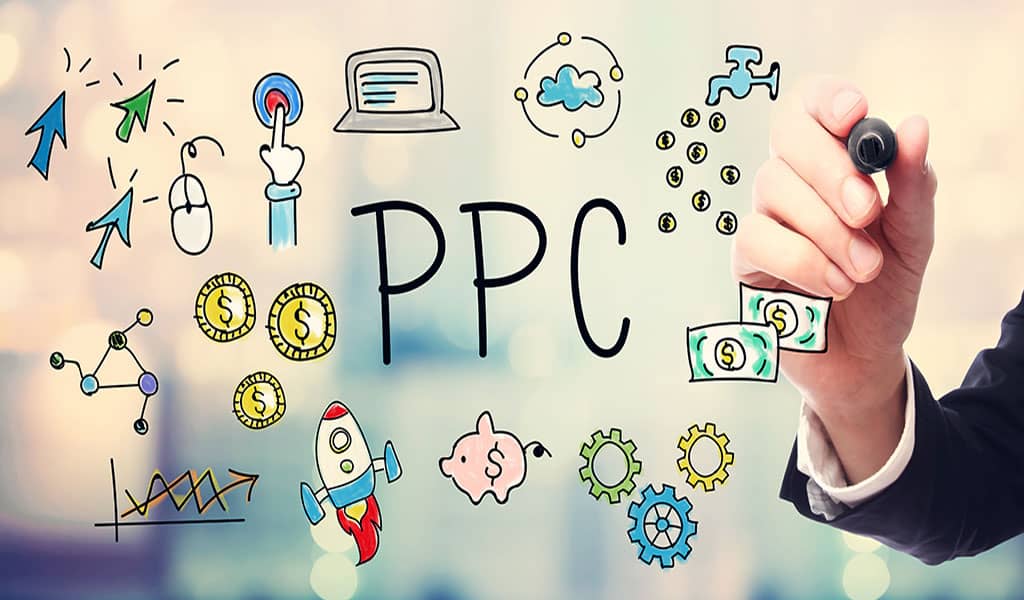In contrast to Google’s algorithm, which is undergoing huge changes that are affecting SEO in unexpected ways, pay-per-click advertising (PPC) remains fairly consistent. You choose an audience, write a set of ads, and decide how much you’re willing to pay per click. When you find a winning combination of market, message, and budget, you can continually generate new sales week after week.
That’s not to say that PPC is a matter of business as usual, however. Increased competition and new variables are changing the game in ways that might seem small at first but can allow for improvements in the margin. Think about this: If you lower your PPC costs by 10%, reaching 15% more customers with the same budget, or double your conversions each month, those “minor” improvements would have a big effect on your bottom line through the course of a year.
With that perspective in place, let’s look at what you can do to create profitable pay-per-click campaigns in 2017…

Narrow Your Ad Campaigns
If there is one thing I could teach every business owner and PPC advertiser in the world, it would be that bigger isn’t necessarily better. Most assume that the goal of their search and social ads should be to generate as much traffic as possible. They know that the top few pay-per-click ad positions get the most traffic and that more traffic should lead to more sales.
While these notions are correct, they overlook the issue of efficiency. If you spend too much to have a top ad position, the sales you do make might not be profitable. Likewise, the search terms that get the most traffic tend to be very broad and general. They may not suggest anything about actual buying intent, which could lead to a lot of wasted clicks.
Google AdWords and other PPC platforms give you an enormous amount of control over when your ads are displayed. Unfortunately, most marketers don’t take advantage of these features. Because they are stuck in the mindset of assuming that more visitors are better than fewer, they spend and spend, throwing clicks against the wall and seeing what will stick.
You can avoid this trap – and increase the returns you see from your PPC advertising campaigns while decreasing costs – by narrowing your ad groups. Think back to your ideal buyer and consider what kinds of search terms they would use when serious about looking for a solution to their problem. Don’t settle for general inquiries; aim for search terms and keywords groupings that tell you something about what they want to do, not just what they want to know.
From there, refine your ads and keyword strategies so that you are only directing your budget toward the people who are likely to buy from you. That might mean fewer clicks to your website, but it’s not going to hurt your sales figures. Narrowing your ad campaigns just means spending less to find the people who would have responded to your offers anyway.

Don’t Settle for Low-Quality Scores
Although this is specific to the Google AdWords pay-per-click platform, it is the online advertising channel most small and medium-sized businesses prefer. And so, an improvement there can have big repercussions when it comes to efficiency and spending.
The major mistake marketers make with AdWords is to leave ad groups with low-Quality Scores running. Even if they are profitable, or appear to be, they are going to cost you money every single day.
That’s because Google uses a multiplier formula to determine ad positions. Your bid price matters, but then it’s multiplied by your Quality Score. So someone with a 5/10 score is likely to pay twice as much as someone with a 10/10 score, and for less visibility within the search listings!
As a rule of thumb, you should closely scrutinize any ad group that currently scores 7/10 or lower. Ideally, your ad groups would be filled with nothing but 9’s and 10’s.
There are some things you can do to increase your Quality Scores. The first is to write ads that generate a higher click-through rate. That’s the primary indicator of success in Google’s eyes and will have the biggest effect on your scoring. It’s also a good idea to put together very small ad groups with just a few keywords within them. That tells Google your ads are focused and fits with the advice I gave too narrow your campaigns.
Finally, pay attention to the relevance of your landing page. If you are bidding on a particular search term, that same term should appear several times on the page you’re directing visitors to through your ad. It should also feature lots of unique content, links to other pieces of information, and a privacy policy. These are minor details, but they help improve your Quality Scores and earn you a stronger ad position while saving you money.
Embrace Retargeting Ads
Smaller marketers have been slow to embrace retargeting ads, which display ongoing messages to searchers who have engaged with ads in the past. For example, you could set things up, so someone who sees your search ad and visits your website continues to see the same ad, or subsequent ads, for a week afterward…Even if they don’t continue to search for phrases related to your business.
In some businesses, retargeting ads can be a game-changer. That’s because we live in an era where customers are likely to check out multiple companies or solutions before making a decision. Or, they may become distracted during their research and forget what they’ve seen or which products or services interested them. They might just need a bit of extra prodding to take action.
Marketing surveys have long suggested that it takes the average customer between 5 to 7 impressions before they’ll respond to a marketing message. There are obviously exceptions, such as when the customer is facing an urgent need. In general, though, giving them more chances to respond to your offers is going to boost conversions.
The real key to getting retargeting right is to adjust the variables of your campaign. You have to figure out where the “sweet spot” is for conversions. For instance, you may find that someone who doesn’t visit your website after seeing your ad for the fifth time is unlikely ever to respond. In that case, it would be logical to tweak your campaign settings accordingly. Likewise, you’ll want to make sure your accounts aren’t set up for too much frequency. Buyers don’t like it when you seem to be “following” them on the internet no matter where they go. The annoyance factor is too high and can hurt the effectiveness of your accounts.
In general, though, marketers are much more hesitant to embrace retargeting ads than they should be. Give your customers more chances to respond to your offers, and they might surprise you by doing so.

Show Off Your Image Ads
Image-based advertising adds a new dimension to pay-per-click campaigns and one that can drastically increase response rates.
This shouldn’t be surprising, given that most of us have a strong preference for visuals over text. The human mind has a much easier time processing images than it does written messages, and what we see tends to have a stronger emotional impact than what we read. That’s why we are a lot more likely to pick a face or color out of a crowd then we are a single word within a body of text.
That’s not to say that every marketer is going to see amazing results with image ads, of course. The nature of the offer, the industry in question, and the quality of the ads themselves are all going to come into play. It’s much easier to promote something like food through image ads than it is tax preparation. Still, someone marketing their professional services business should at least try image advertising. They could use facts, statistics placed over images, or even illustrations to draw attention.
It’s also worth noting that image ads can tie in nicely with retargeting. If you have good visuals on your website, using them again, or including other pictures that are closely related, can instantly draw a searcher back to the topic they were investigating before. And, of course, some buyers are going to respond more positively to images (or images with text) than they do to written offers.
And finally, you should know that image advertising overlaps with social pay-per-click options, which are becoming a bigger and more important part of the marketing mix. Although they haven’t overtaken search ads yet, there is the potential that they may do so shortly.
Give Facebook Advertising a Try
Among small business owners, there is an ongoing debate about whether Facebook advertising represents the best thing ever to happen to PPC or a complete waste of time and money. The answer (as usual) rests between those two extremes.
After all, whether social ads are going to pay off for you depends on what business you’re in and how well you use them. Because Facebook’s advertising platform is almost entirely image-based, the caveats I gave a moment ago still apply. You can probably get someone to click on your ad from within their feed if you have a striking image that grabs their attention. If your message is more complex, you may have a hard time pulling their focus away from the memes and updates.
Images aside, the other big difference with advertising on Facebook is that you focus on the demographic rather than a search term. You can direct your ads toward people who follow a certain page or cause, have expressed interest in a hobby or profession, or like a company that is similar to yours. This is essentially the opposite of the way Google’s advertising model works.
On a search engine, you try to capture a person at the exact moment they are thinking about your product or service; on Facebook, you try to pick out your ideal buyer and grab their interest despite the fact that they probably weren’t focused on buying.
As with anything else in the world of internet marketing and online advertising, this is going to work better in some situations than others. It’s easier to generate impulse buys on Facebook than it is B2B leads, for example. Still, with the reach of more than one billion people and obvious opportunities for relationship building and brand awareness, the world’s largest social network is always worth trying. And so, if you haven’t tried Facebook advertising already, I would encourage you to make the plunge in 2017.

Keep Fine-Tuning Your Campaigns
Creating narrow PPC advertising campaigns doesn’t have to mean that your accounts are limited. Instead, it means you’re paying attention to your market, only reaching out to buyers using the messages and channels they respond to, and being smart with your budget.
I think it’s almost always a good thing for small businesses to keep trying new ideas. Not all of them will work out. Some of my clients are seeing great results with image ads in retargeting, for example, while others get a bigger payoff from Facebook. What matters is that they do not give up and that they keep looking for ways to find the right kinds of visitors and convert them into buyers.
Much of this comes back to web analytics. Over time, trends will develop within your pay-per-click accounts. The great thing about paid ads is that you can track the results of every visitor or promotion. You can see what activities and conversions are resulting, and the associated costs. Using that data, you can rewrite ads, adjust your landing pages, and even move or devote parts of your budget in another direction.
The point I want to make here is that PPC advertising should never be static. Whether your campaigns are succeeding beyond your wildest dreams or need some improvement, those are valuable dollars you are spending on Facebook, Google, or the other search engines. Either make the time and effort to keep the percentages moving in the right direction or work with a web design and internet marketing team that will do it on your behalf. Otherwise, your ads will get stale, sales will decrease, and you’ll find yourself wasting both money and opportunities.
In 2017, pay-per-click advertising is still one of your best ways to generate new visits and purchases. Keep fine-tuning your campaigns to get the most out of this proven marketing channel.
10-Point Strategy Guide to Small Business Website Design and Internet Marketing is a ten part Blog series by Founder and Owner of WebWize, Inc., Glenn Brooks.
Glenn has been part of the website design and development industry since 1994, over two decades. Before WebWize he spent more than 15 years in the Advertising, Marketing, and Print Industries. Don't miss this opportunity!
10 Part Strategy Series TOC
Strategy #1: Give Your Website a Job
Strategy #2: Emphasize Website Performance and UX
Strategy #3: Build a Sales Funnel for Bottom-Line Growth
Strategy #4: Understand the New Age of Search Engine Optimization
Strategy #5: Make Your PPC Campaigns as Efficient as Possible
Strategy #6: Use Social Media Productively
Strategy #7: Integrate Video Into Your Internet Marketing
Strategy #8: Revitalize Your Email Marketing
Strategy #9: Cultivate and Grow Your Online Reputation
Strategy #10: Refine and Improve Your Sales Funnel
Or Contact WebWize At 713-416-7111
Before making a final decision on a Web Design Company, spend a few minutes on the phone with us.
About Glenn Brooks
Glenn Brooks is the founder of WebWize, Inc. WebWize has provided web design, development, hosting, SEO and email services since 1994. Glenn graduated from SWTSU with a degree in Commercial Art and worked in the advertising, marketing, and printing industries for 18 years before starting WebWize.

